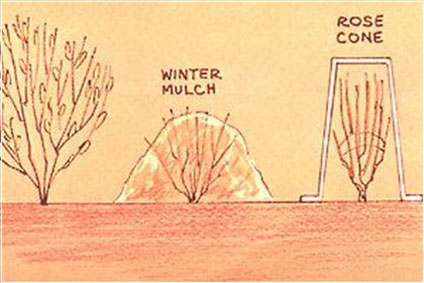Blog
How to Protect My Roses During the Winter

There are many methods to provide winter protection for roses. The whole idea of winter protection is to keep the plant uniformly cold and frozen all winter and prevent the damaging effects of alternate freezing and thawing. Whatever method is chosen, don't begin covering plants too early. Wait until a hard killing frost has caused most of the leaves to fall. You may also want to wait until the temperature has dropped into the teens for several nights. Prior to covering, remove any foliage or other debris that might harbor disease for the next season.
Before covering, some tall roses may need minor pruning to reduce their height, and tying of the canes together to prevent wind whipping. Pruning, however, at this point should be kept to a minimum. The majority of the pruning will be done in the spring to remove dead and diseased canes.

The most common way to provide winter protection is to pile or "hill-up" a loose, well-drained soil/compost mix around and over the plant to a depth of about 10-12 inches. A variety of hilling materials can be used, but the key is to be sure that the material is well drained. Wet and cold is far more damaging than dry and cold. Also, the decisions that are made when preparing the site for roses really governs what kind of success you will have in winter survival. A rose that is planted in poorly drained soil will suffer and often not survive the winter when that same rose, planted in a well-drained site, will flourish. Soil that is used to "hill-up" plants should be brought in from outside the rose garden. Scraping up soil from around the plant can cause root injury and lessen the plant's chance for survival.
Climbing and rambler roses offer challenges with regard to winter protection. In very cold climates and for marginal varieties, climbers may need to be removed from their supports and bent to the ground, then covered with six inches of soil and mulched. When laying climbers on the ground for covering, one needs to be very careful not to injure or crack the stems. As the weather gets colder their long stems are not as pliable, and they are easily cracked resulting in the loss of that cane.
